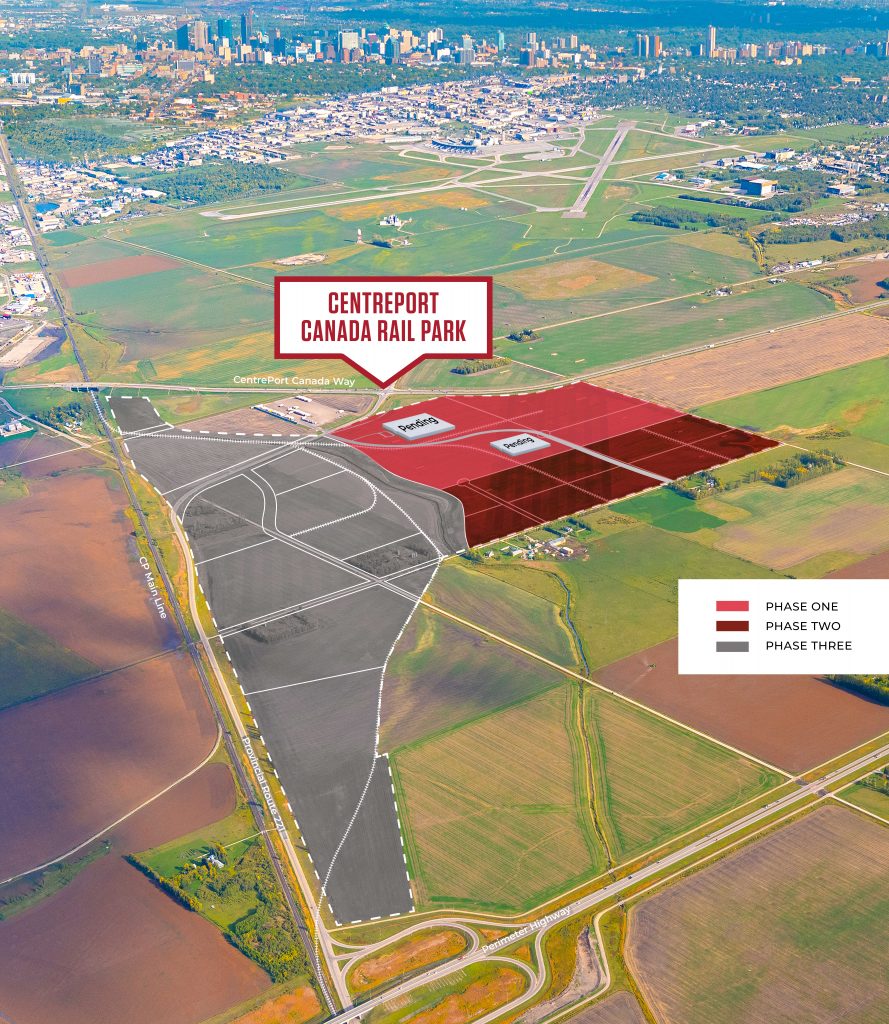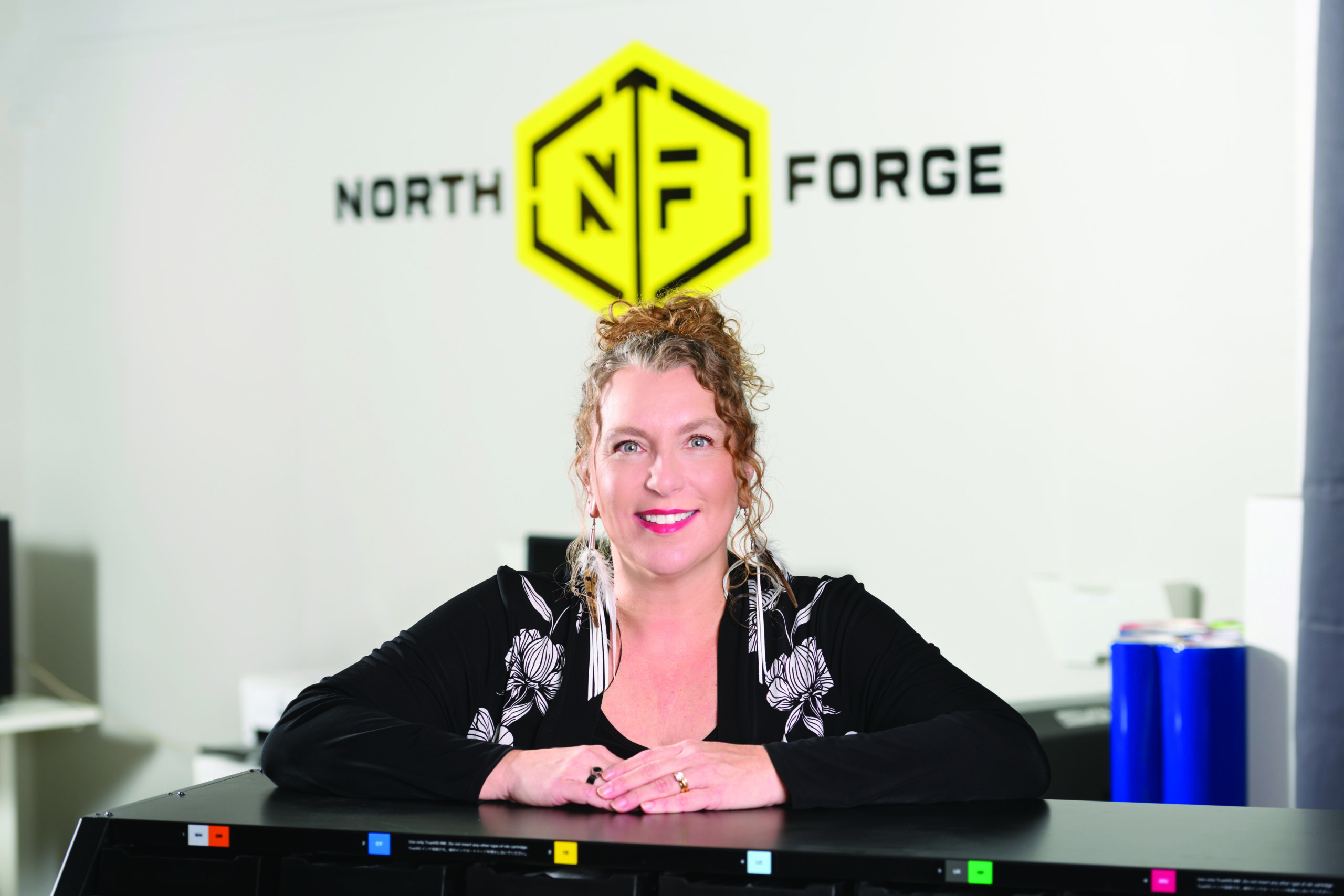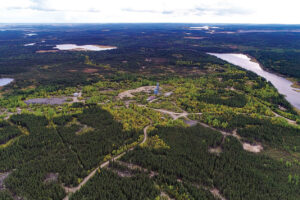Ken Mariash And Focus Equities Are Bringing The Centreport Canada Rail Park To Life
The man behind arguably the biggest business expansion in Winnipeg’s history says the Manitoba capital is poised to become Canada’s next boom town.
Ken Mariash, founder of Focus Equities Inc., which is preparing to break ground later this year on the CentrePort Canada Rail Park, a 665-acre development combining industrial space with logistics infrastructure—says other competing markets have simply become too expensive.
Mariash and Focus Equities have more than 50 years of unique, build-to-suit experience with Fortune 500 companies including IKEA, Walmart, Loblaws, and industrial companies including Worley Parsons, Kuehne + Nagel, and Canadian Freightways.
Their projects include: Edmonton’s Aurum Energy Park, a 750-acre development that connects Alberta’s energy sector to the high load corridor, the Anthony Henday Ring Road, and rail for bulk transport needs.
Deerfoot Meadows in Calgary, which is to date North America’s most dynamic shopping location. The billion-dollar, 400-acre project is a 3.5-million square foot retail development at the centre of three major freeways carrying over 200,000 cars a day. Nearby is Meadows Mile, a 27-acre parcel overlooking Deerfoot Meadows.
Victoria’s Bayview Place is a residential development that stretches over 20 prime acres on the last developable piece of land on the city’s Inner Harbour.
It’s our time
“Now it’s Winnipeg’s turn. The Canadian economy is maturing, and cities end up being more competitive with what they’re best at,” he says.
“This is a $3-billion opportunity, which would be one of the biggest business expansions Winnipeg has seen since the 1920s, when the town was expanding rapidly.”
Winnipeg was Western Canada’s first industrial city a century ago and the slow and steady performance of its diverse economy in recent years is very attractive, he says.
“Site selectors point at Calgary, Edmonton, Vancouver and Toronto. Winnipeg is ready to become the fifth city in this category. You’re not going to get every deal but a company with freight logistics requirements now has a good reason to look at Winnipeg.”
The rail park concept is an industrial park occupied by dozens of tenants that require rail cars to ship their goods all over North America. With so many shippers located in the same vicinity, it would be cost effective for them—and the rail lines—to use rail spurs connecting them to Canadian Pacific’s nearby main line.
From there, the overall reach of the rail park will run from the Port of Churchill and the Mexican ports of Manzanillo and Lazaro Cardenas to the Port of Prince Rupert, B.C. and the Port of New Orleans. This end-to-end combination creates the first Canada-U.S.-Mexico rail network, due to CP’s acquisition of Kansas City Southern (KCS) and Kansas City Southern Mexico (KSCM). Its new single-line offerings will provide unmatched access to Atlantic, Gulf of Mexico and Pacific ports, linking international intermodal shippers with North America’s largest consumer markets.
Diane Gray, CentrePort’s president and CEO, said her team has been championing the rail park for several years but had to keep silent on Focus’s participation until recently.
“This project really cements the tri-modality of CentrePort. It’s very important to us and we’re excited to see it get off the ground with an experienced and patient developer,” she says.
“We worked with the province to develop the business case and an RFP for the project. It was a public RFP that went out far and wide. Focus Equities capabilities in managing complicated, large-scale projects came to our attention. As the RFP closed and we reviewed the companies that submitted bids, their bid stood out, so we recommended them as the preferred developer for the rail park.”
On the rise
Tenant announcements will start rolling out through the spring and summer and although it’s too early to name names, Mariash says they’ll include multi-national corporations and some “very prosperous” Canadian companies. There will even be a few from Manitoba.
Tenants will be able to start construction simultaneously with the servicing going in, with the goal of being operational at the same time as the servicing is fully installed.
The park’s target client depends on the industry, but Mariash says he’s got his eye on one global logistics company that handles the packaging and movement of goods.
“It starts with an ‘A’,” he hints.
He’s also looking at food supply chain companies, automobile manufacturers, heavy raw material processors, mining and mining-related companies, warehousing, and logistics for distribution across Canada and into the U.S. and Mexico.
Mariash is quick to note that Focus, after more than a half-century of build-to-suit experience, does nothing but large-scale projects today. One of the gems in its portfolio is Deerfoot Meadows in Calgary, a $1-billion, 400-acre project with four million square feet of retail space. Some of its clients include Fortune 500 companies such as IKEA, Walmart, Loblaws and industrial giants such as Worley Parsons, Kuehne + Nagel and Canadian Freightways.
Building up
The rail park, strategically located in the R.M. of Rosser within the capital region of Winnipeg on land just west of Sturgeon Road on the north side of CentrePort Canada Way, the highway that connects the west Perimeter Highway with Inkster Boulevard, will offer fully serviced lots ranging in size from a couple of acres to 50 acres or bigger.
The R.M. of Rosser has been instrumental in driving forward a larger vision for industrial development in the area and its commitment to a purposeful infrastructure build-out has been key to laying the foundation for the construction activity seen today. The R.M.’s close relationship with the Inland Port Special Planning Area, collaborative approach to decision making, and its development-friendly style enables projects to move through the development process quickly and efficiently.
“We have been committed to CentrePort since the very beginning, and because our developers believed in us, we were able to fast track the infrastructure build-out, laying a foundation for the activity we are seeing today,” says Frances Smee, reeve, Rural Municipality of Rosser. “In Rosser, we believe that strong relationships are vital to success, we operate from a basic principle of fairness to create win/win/win situations for developers, our community and Manitoba. We really are open for business.”
Mariash estimates capital expenditures on facilities at the rail park could hit $3 billion or higher.
“Some of these buildings are very big and expensive. Land is usually 10 to 20 per cent of the cost. The sweet spot is 40 acres,” he says.
“Buildings are starting around 200,000 square feet and going up to one million square feet. People are being very conscious of future growth. Some are starting with 300,000 square feet but buying enough land to go to one million square feet. We’re looking at assembling a few more hundred acres if we can. This is getting absorbed relatively quickly.”
 Port of call
Port of call
CentrePort was created by the province in 2008 and its 20,000 acres of land include the Richardson International Airport. More than 100 companies have joined the port in the last 14 years.
CentrePort’s large tri-modal inland port allows goods to move seamlessly between rail, truck, and air cargo.. It also offers access to interstate-quality highways on both the east and west sides of the park, where speed limits rise to 90 km/h just five minutes away. Of course, the Canada-U.S. border crossing an hour south at Emerson, Manitoba is one of Canada’s key land ports for trade.
Mariash says teamwork will be critical to the rail park’s success and the Focus team plans to promote CentrePort at every opportunity.
“If we help them, it’ll drag us along. We’re working closely with them on pitching the whole 20,000 acres. It’s not just about us, 20,000 acres is a pretty serious piece of dirt near an international airport,” he says.
“It’s not very often you have running room with no obstacles. It’s all green field and good to go. For Winnipeg and Canada, it’s a significant thing to have 20,000 acres to be developed.”
Something big is happening
The rail park’s impact could be felt well beyond Manitoba’s and even Canada’s borders. Mariash says it could play a big role in improving the global supply chain. The days of just-in-time delivery are becoming a thing of the past, he says.
“The supply chain can’t work that fast. You need storage and warehouse capacity when it’s taking 60 to 90 days to get your product on the shelf,” he says.
Gray says the rail park is unique because it co-locates companies that manage part of their supply chain by rail, which creates an efficiency of scale for the railroads and the companies that share the infrastructure.
“It’s going to become even more desirable to manage whatever freight you can by rail. It’s less expensive and more environmentally sustainable,” she says.
Mariash says the RFP process was very thorough.
“They did a great job sorting through the proposals because they chose us,” he says with a laugh. “You need a meeting of the minds on price and expectations.”
CentrePort’s facilities can help take some of the pressure off traditional ports, he says.
“Land logistics and transportation are becoming a very big part of the discussion. The ports are all jammed up. As rail becomes more popular, you can load those trains up quicker. One train hauls five miles of containers,” he says.
The right ingredients
Mariash is quick to caution that the rail park couldn’t have gone just anywhere. It needed to be in a city that can support its employees and other needs.
“You’ve got to watch carefully the stress you put on a community. Winnipeg has enough talent to support a workforce (at the rail park). The schools and medical industry have capacity and when you add in the culture, you’ve got it all. You’ve got a tremendous culture that you should brag about,” he says.
And if Winnipeg won’t, Mariash will instead. Focus puts on concerts in new markets to show off primarily local artists. For example, it recently hosted a 200-acre concert in Calgary featuring 10 bands, including Steppenwolf and Tom Jackson.
“Our budget for marketing and promotion is very large. Our brand is not only the site but the city,” he says.

Shout it out
Mariash says the rail park’s biggest challenge ahead is getting the word out to as many multi-national companies as possible that want to sell their products in North America and around the globe.
“Winnipeg has been shy about letting the world know (about itself) and getting into a bragging contest. The first thing is to market it, find out what you’ve got and sell it. Winnipeg has an airport, rail capacity, a great labour force and great schools. The town is screaming to grow. They don’t have to do anything more. They just have to market it and sell it,” he says.
Winnipeg is essentially at the geographic centre of North America so the location makes perfect sense for both the rail park and companies that want to ship their goods, he says.
Mariash sees Manitoba becoming a market leader in affordable manufacturing and servicing in the next five to 10 years.
“There’s a huge demand for what Calgary, Edmonton and Vancouver can’t do because it’s so expensive. Manitoba should own the space,” he says.
Gray agrees and believes this project is the largest industrial park that Manitoba has ever seen.
“I haven’t found one bigger,” she says. “It’s helping to cement that vision of CentrePort as an investment attraction opportunity for companies that are outside of our province, whether that’s in Canada or around the world. It shows that Manitoba has a vision for being able to attract and support investment that includes strategic infrastructure, transportation, labour market needs and skills and other supports that go into a thriving economy.”




















